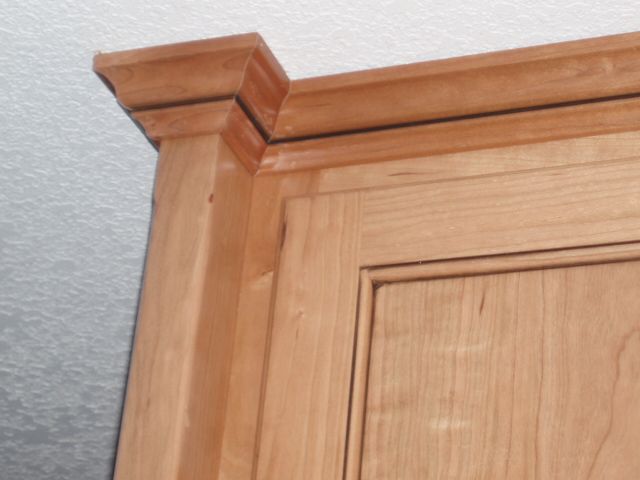Question
We are primarily a panel processing operation that is just getting into the manufacturing of our own raised panel doors. When gluing up panels for doors and drawer fronts, what should be the minimum/maximum size of rips used to make up the panels?
Forum Responses
(Architectural Woodworking Forum)
From Professor Gene Wengert, Sawing and Drying Forum technical advisor:
I have seen as small as 1", but it is important to avoid having the thickness and width very close in size, as sometimes they will get reversed when assembled and that is not good. So, a practical minimum is around 1-1/2". However, as a glue line is expensive (but so is wood), you do have to consider this cost.
More expensive cabinetry generally will have less pieces and better grain and color matching between the pieces. Cheaper cabinetry will use more pieces and spend less time matching.
So it comes down to who you are trying to sell these doors to, and what will they accept. I build almost exclusively flat panel doors, so it's a non-issue for me. But if I were buying raised panel doors, I would not be happy seeing 2" wide or less strips. That would say to me they just used whatever scraps were lying around after the last job. I would guess a good number would be in the neighborhood of 3-5" as average. More or less depending on the factors I mentioned above.
After we rip for face frame stock, anything left goes into a bin for various small moldings (less then 1 3/4"). As we rip down everything gets down-sorted into the smaller stock piles. This way we maximize our stock to utilize the widest and cleanest for the "show" elements of the project.
However, if you don't have elements of the project smaller than the width of your rails and stiles, and you want to put it back into your panel makeup, you will have to be very careful to spend the time matching grain and color.
Another thought... If you are left with widths 2" and less and don't want to use it in your glued up panels, you may be able to final size it and resell that stock to another cabinet shop for their face frame stock. I know a lot of shops that buy sized stock (s4s) for face frames, and they pay a premium over standard s2s, s3s board foot costs.
By the way, optimizing your panels will speed up production on so many levels. For instance, if your saw man has a ready inventory of large panels to choose from he won't be waiting for panels to be glued up and your panel guy won't be gluing up panels to match a particular door size. Granted some doors will eat up more of a panel than others, but I won't accept the arguments that larger doors will require larger (than optimized?) panels. Let's say you have a tall door, 60" tall. Instead of gluing up a large panel, investigate dividing that door into smaller panels. Your process won't be slowed down and you will have a more stable door.
